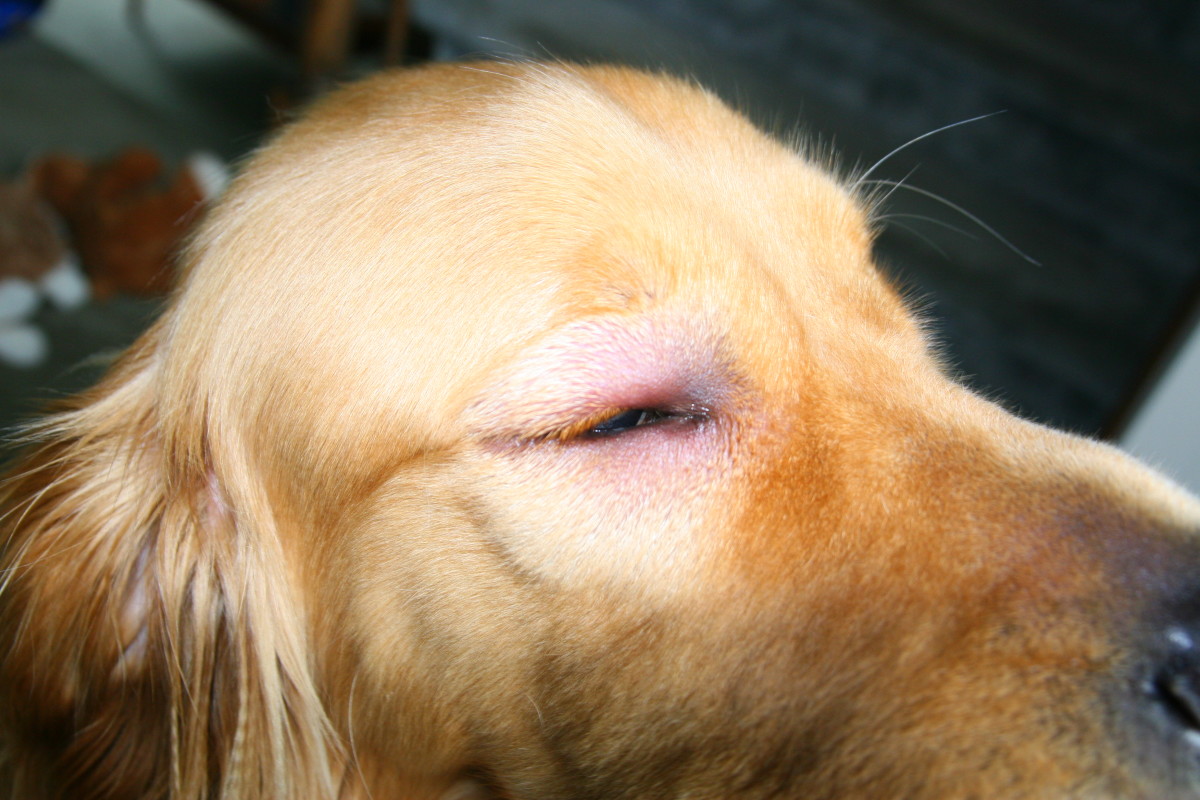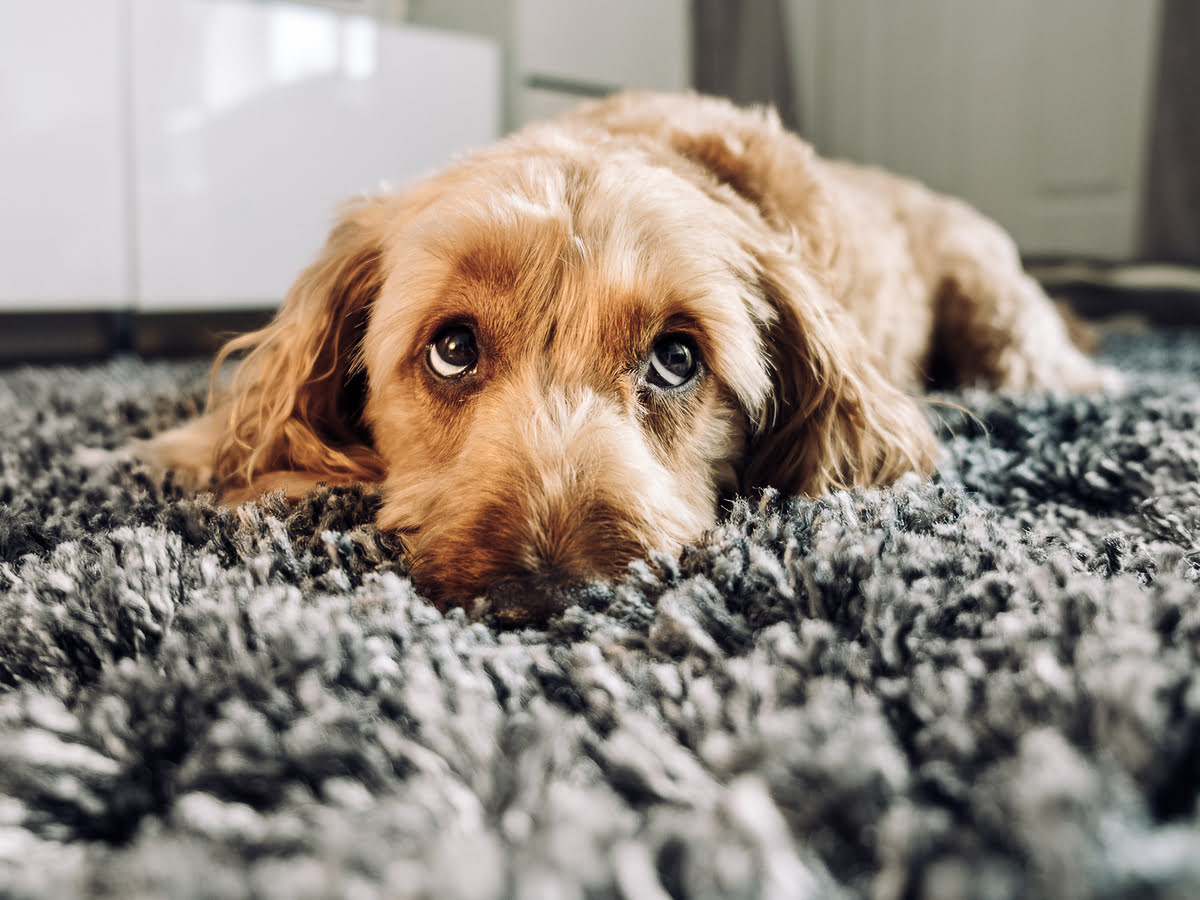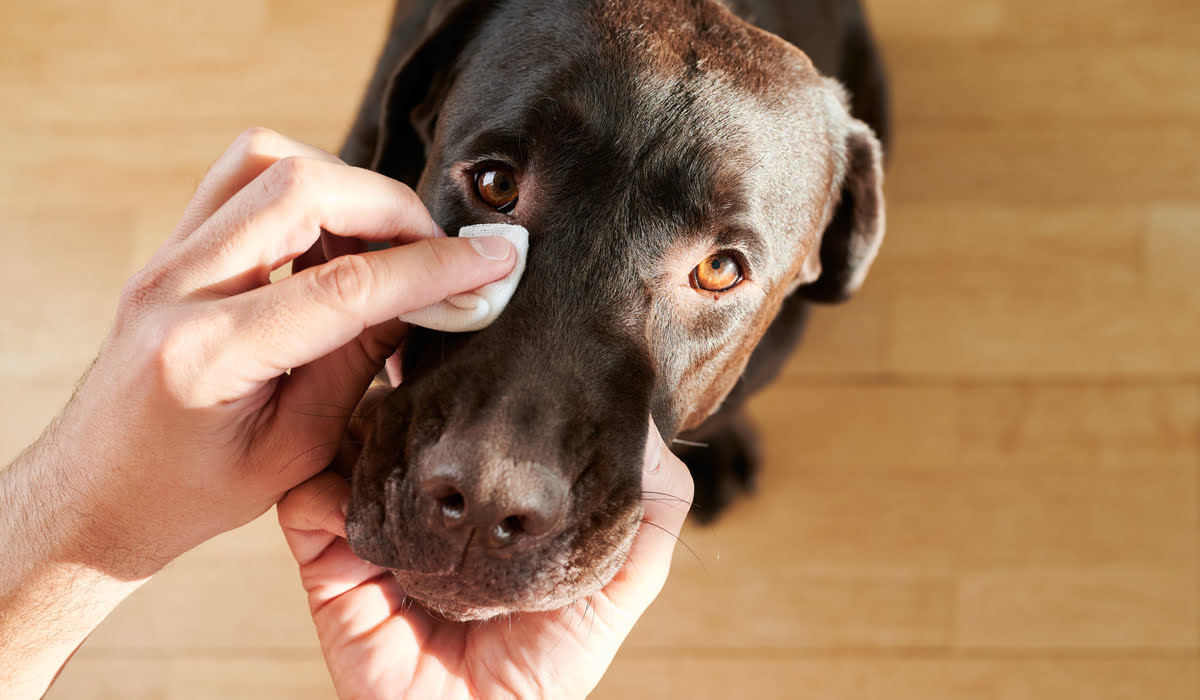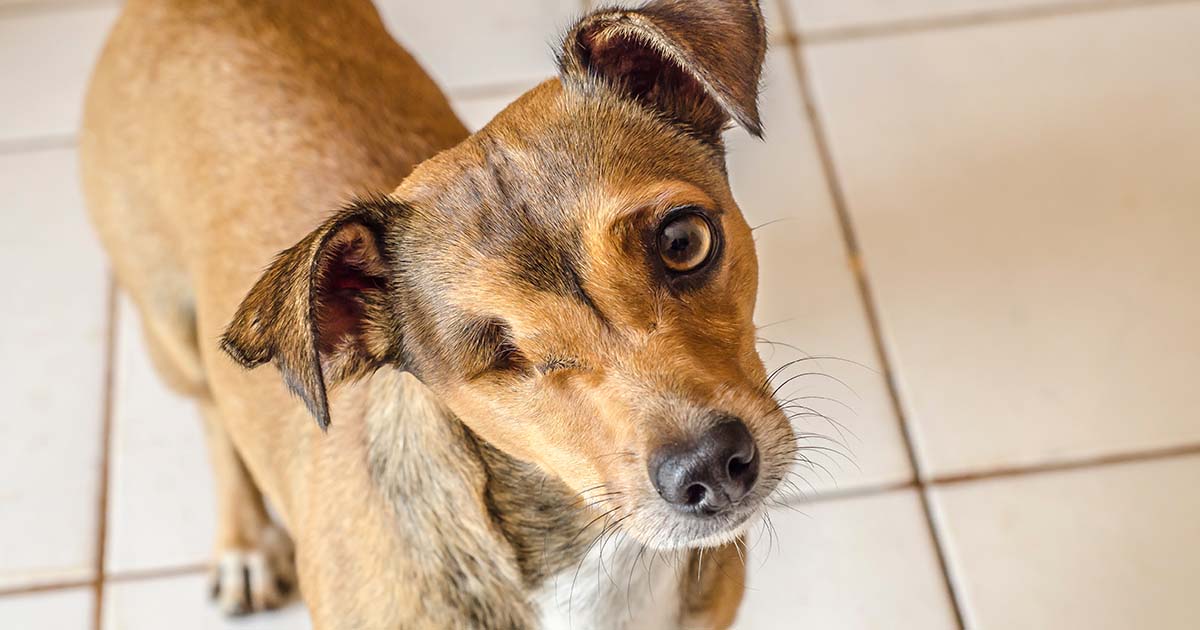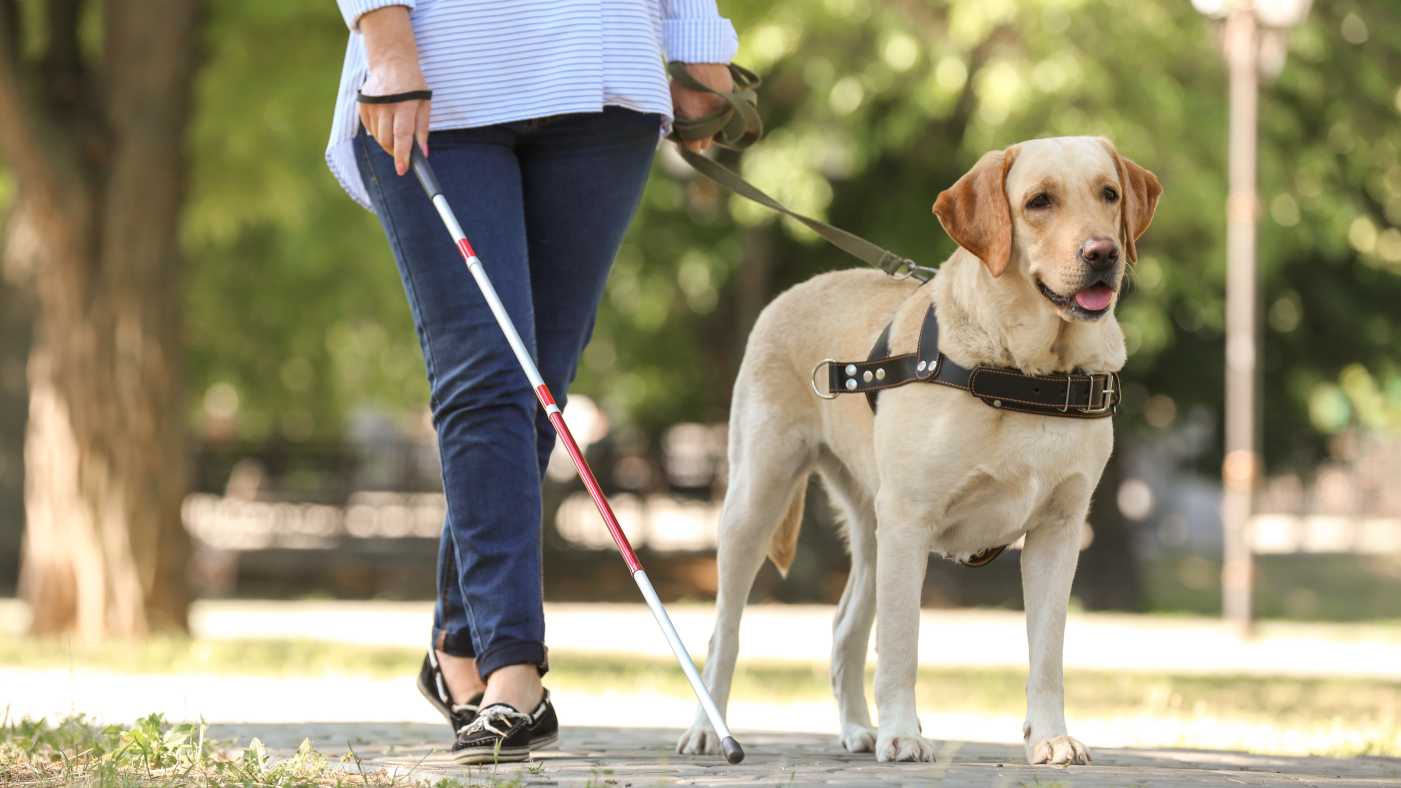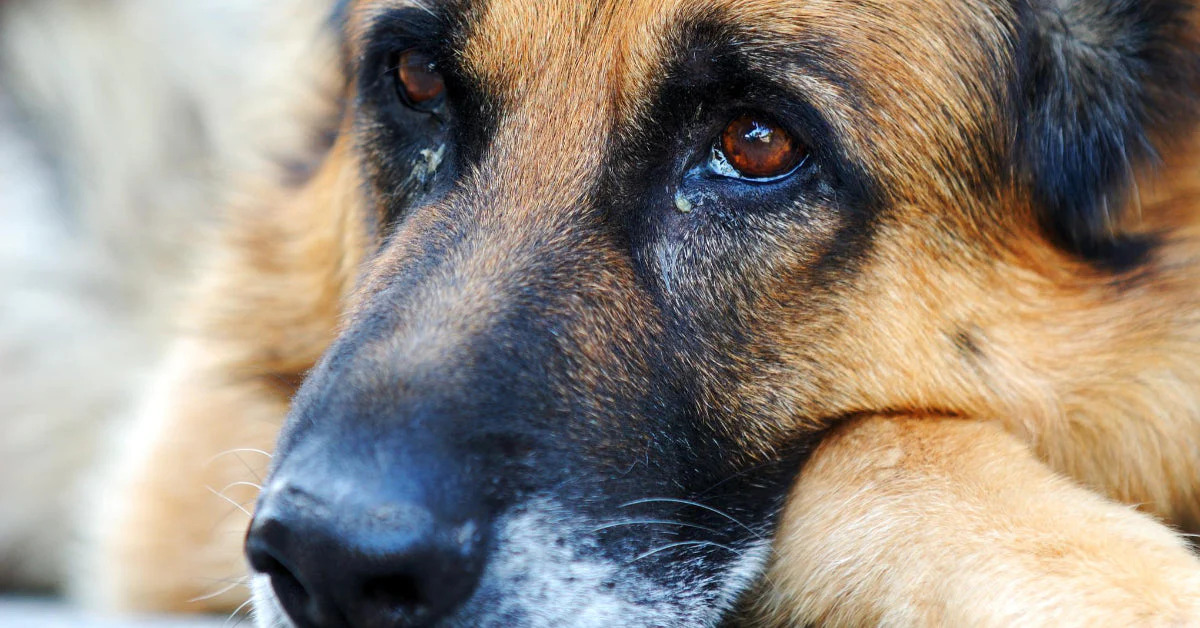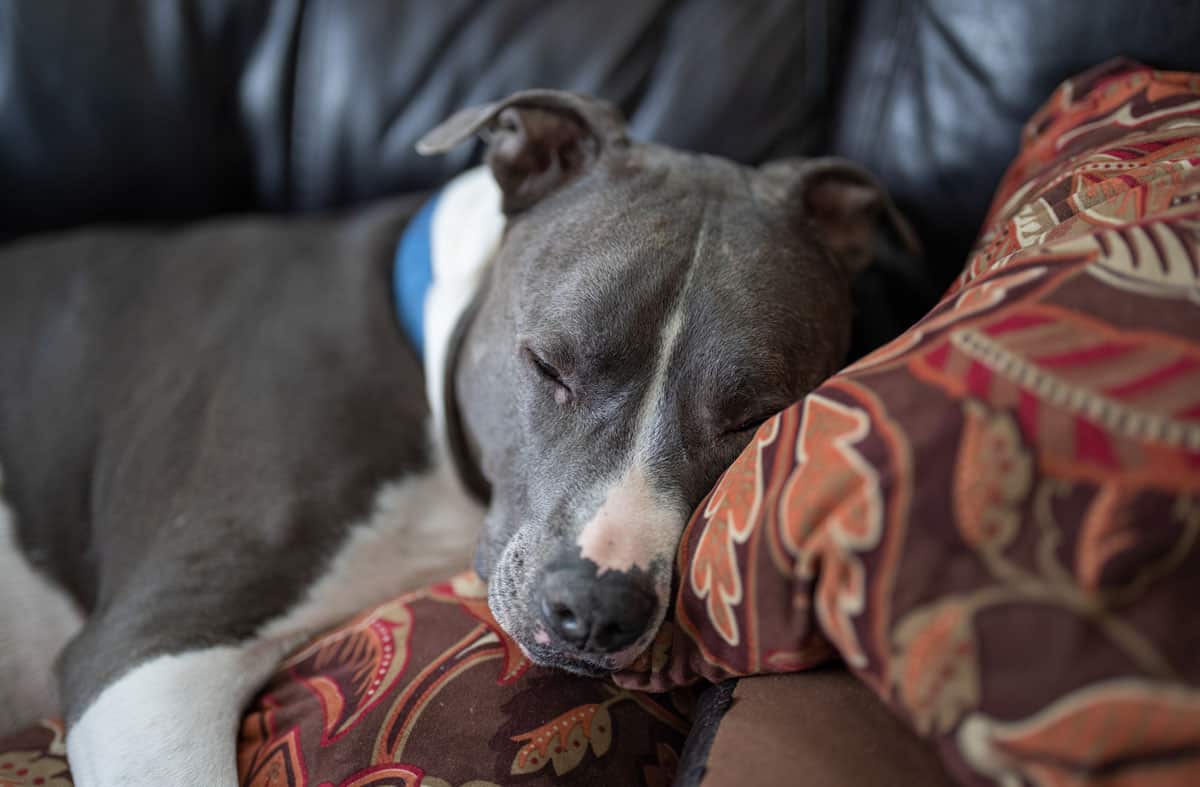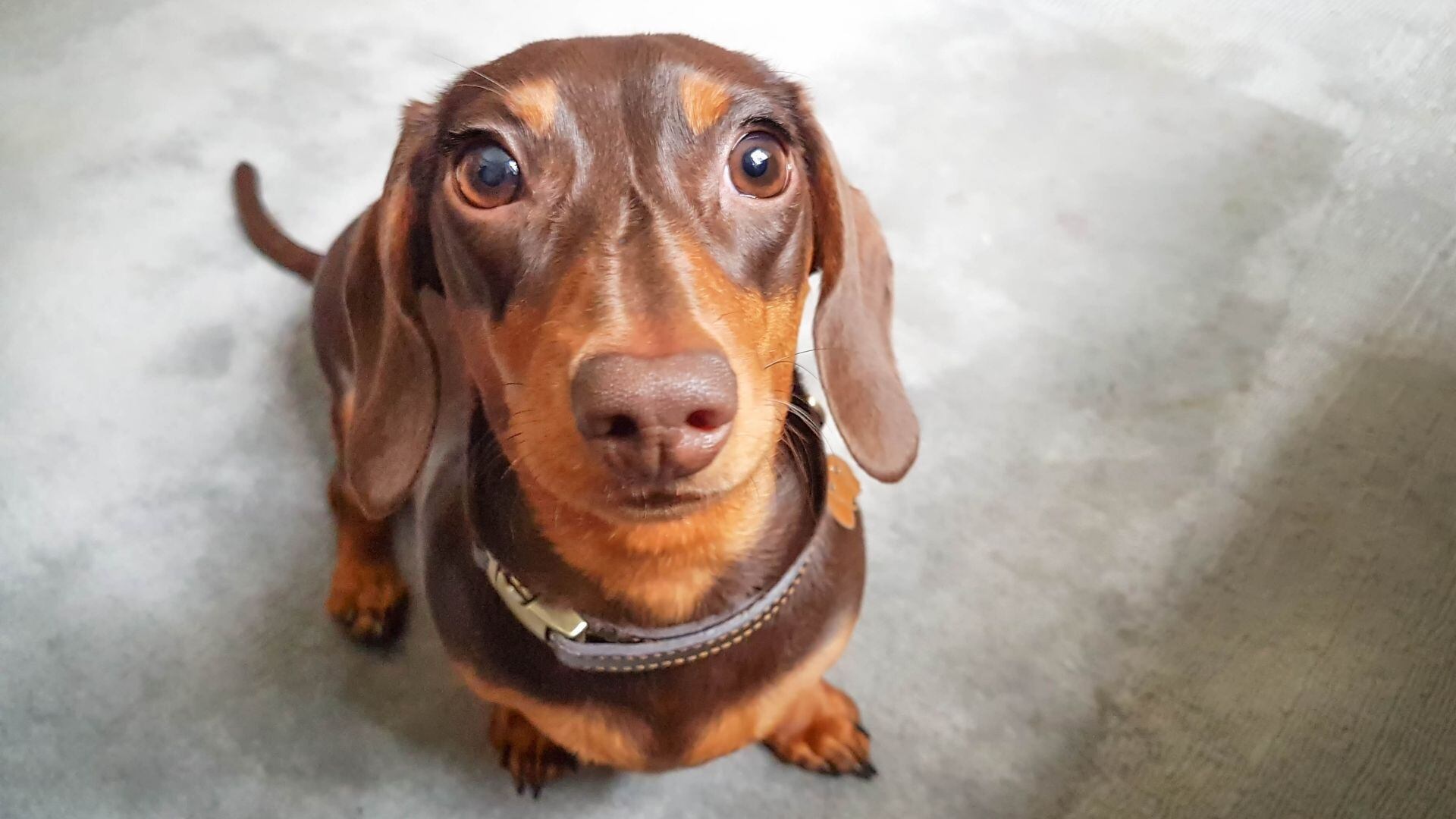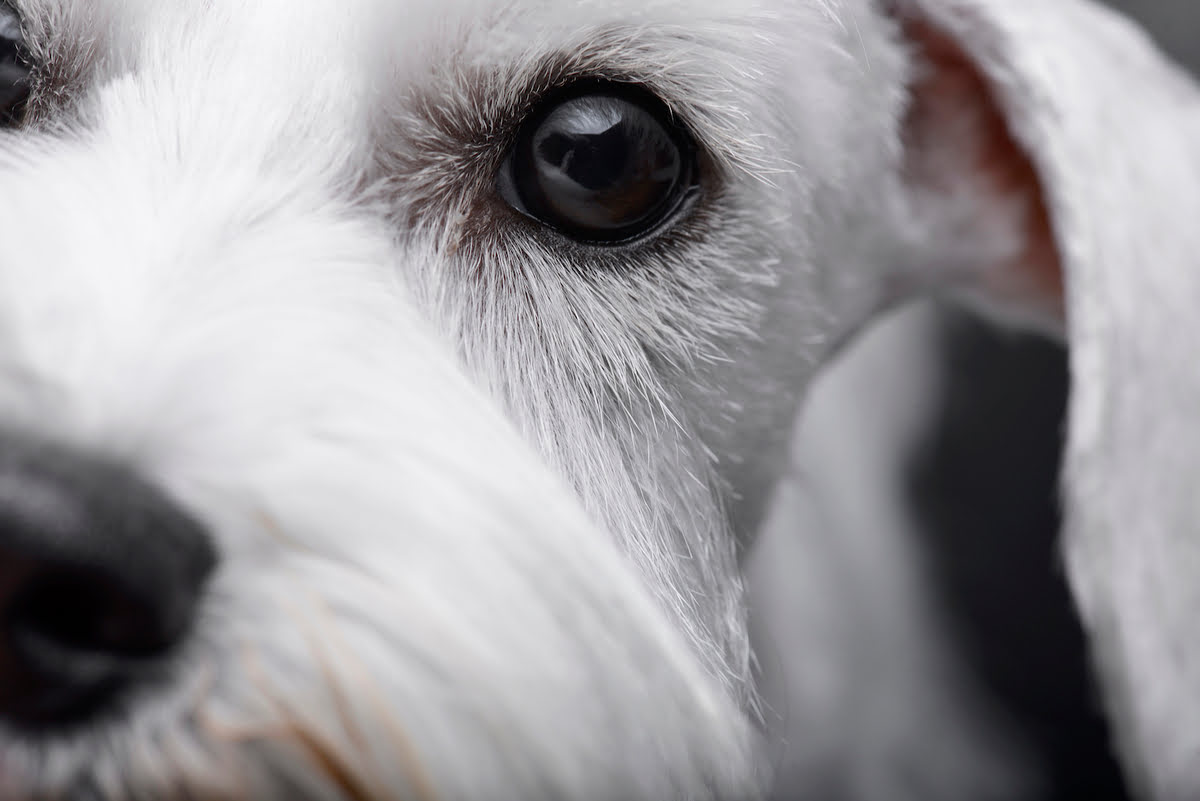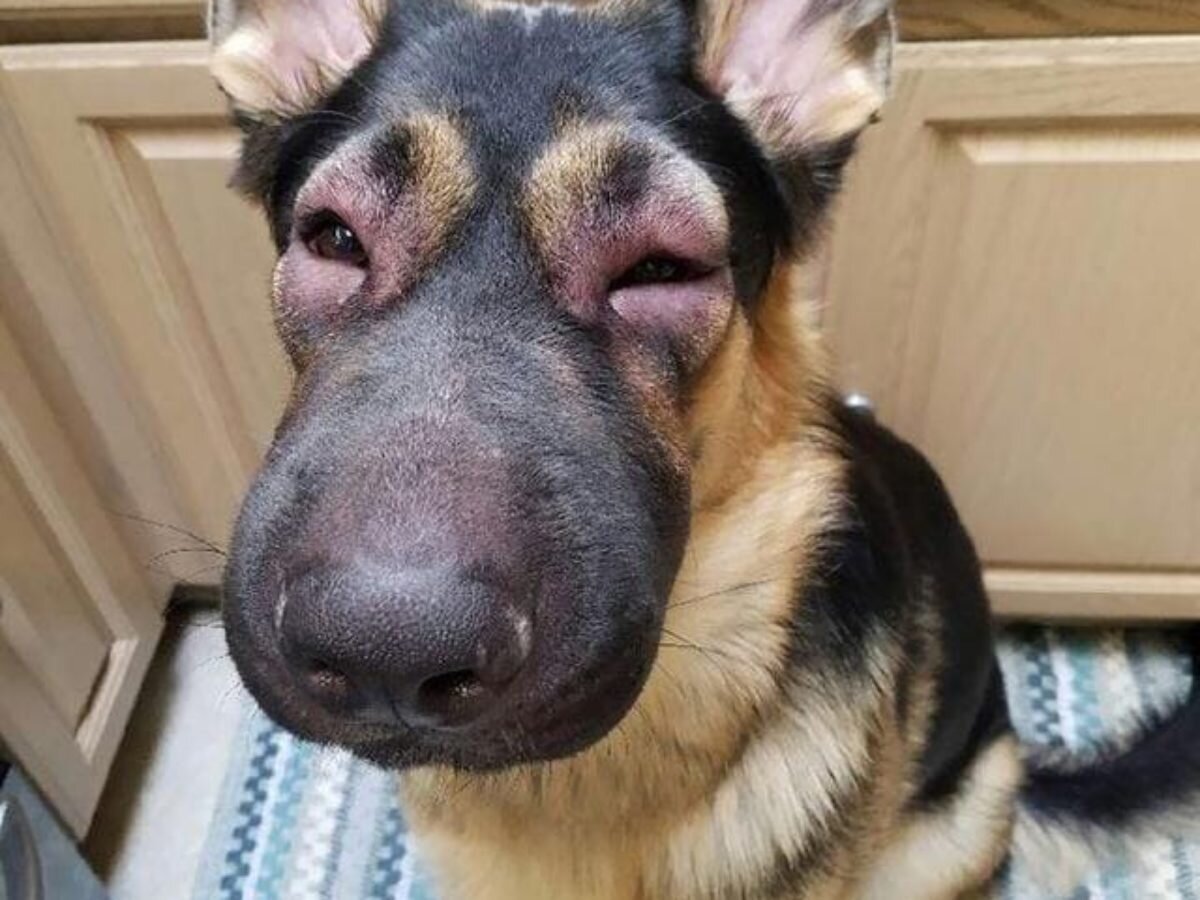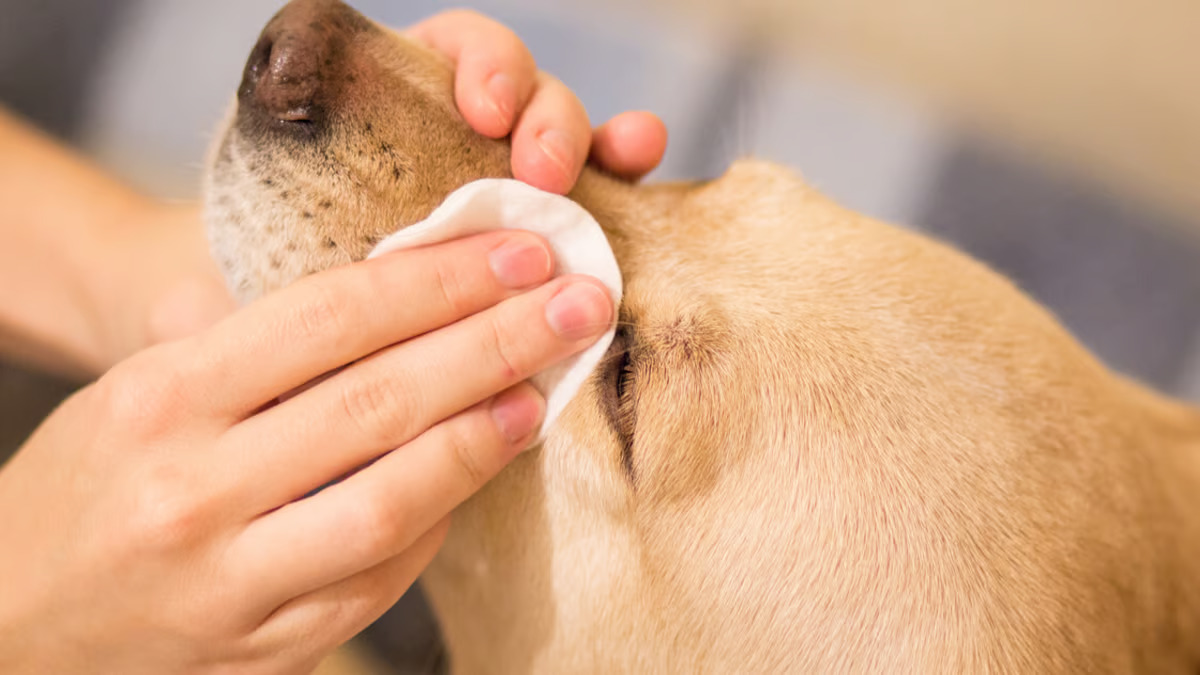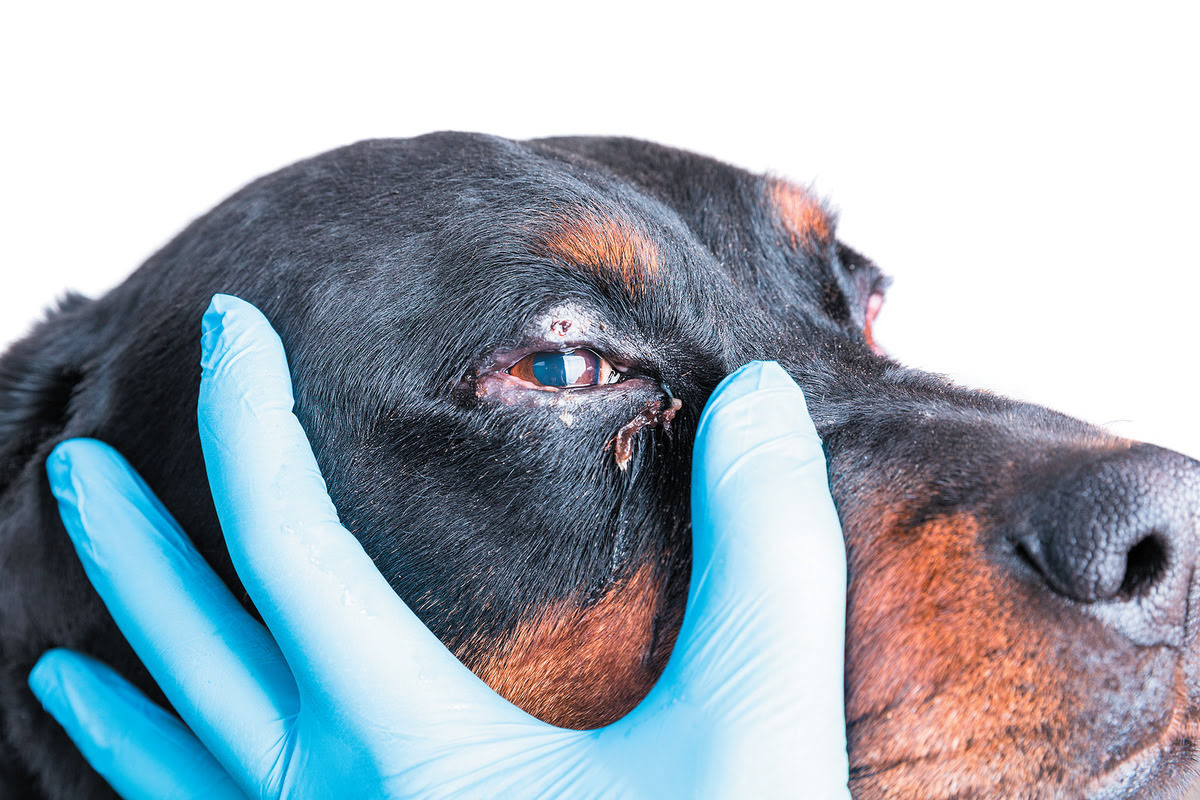Home>Health & Wellness>Common Health Issues>Eye and Ear Health>What To Do If A Dog Gets Accidentally Hit In The Eye
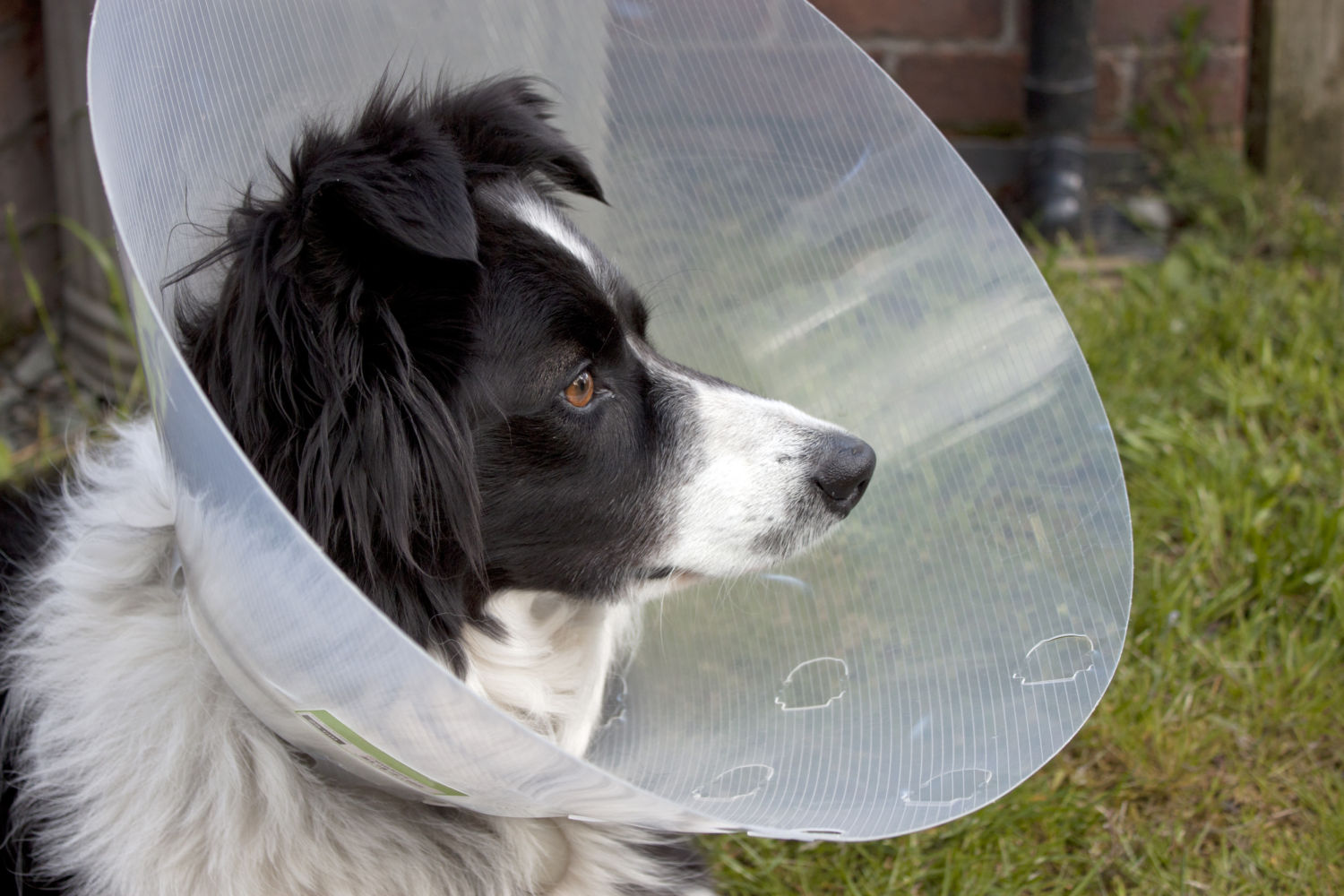

Eye and Ear Health
What To Do If A Dog Gets Accidentally Hit In The Eye
Published: February 11, 2024
Learn how to handle a dog's eye injury and provide immediate care. Discover essential tips for maintaining your dog's eye and ear health.
(Many of the links in this article redirect to a specific reviewed product. Your purchase of these products through affiliate links helps to generate commission for Pawsomeoldies.com, at no extra cost. Learn more)
Table of Contents
Introduction
Accidents can happen unexpectedly, and when a beloved pet is involved, the situation can be distressing. If a dog gets accidentally hit in the eye, it's crucial to act swiftly and calmly to provide the necessary care. The eyes are delicate organs, and any injury, no matter how minor it may seem, requires immediate attention to prevent potential complications.
In this article, we will discuss the essential steps to take if your dog experiences an eye injury. From assessing the situation to providing immediate first aid and seeking veterinary care, we will guide you through the necessary actions to ensure your dog's well-being. Additionally, we will explore preventive measures to minimize the risk of future accidents, ultimately promoting a safe and healthy environment for your canine companion.
Understanding how to respond to an eye injury is vital for every dog owner. By being prepared and informed, you can effectively address the situation and provide the best possible care for your furry friend. Let's delve into the crucial steps to take when a dog encounters an accidental eye injury, ensuring that you are equipped with the knowledge and confidence to handle such a challenging scenario.
Read more: What To Do If A Dog Gets Soap In Its Eye
Assessing the Situation
Upon discovering that your dog has been accidentally hit in the eye, it's essential to remain calm and focused. Assessing the situation promptly is crucial in determining the severity of the injury and the necessary course of action. Here's a detailed guide on how to assess the situation effectively:
-
Observe the Dog's Behavior: Pay close attention to your dog's behavior. Signs of distress, such as pawing at the eye, excessive blinking, or rubbing the face against surfaces, may indicate discomfort or pain. Additionally, if the dog is squinting or keeping the affected eye closed, it could signify an injury.
-
Inspect the Eye: Gently examine the affected eye. Look for any visible signs of injury, such as redness, swelling, tearing, or discharge. If there is an object lodged in the eye, do not attempt to remove it, as this can cause further damage. Instead, seek immediate veterinary assistance.
-
Assess Vision: Assess the dog's vision by observing its response to visual stimuli. You can do this by gently waving your hand near the affected eye and noting the dog's reaction. A diminished response or lack of visual tracking may indicate impaired vision.
-
Check for Other Injuries: In some cases, an accidental eye injury may be accompanied by other injuries, especially if the incident involved physical trauma. Carefully inspect the surrounding area for any additional wounds or signs of trauma, as these may require attention as well.
-
Monitor for Discomfort: Watch for signs of discomfort or pain, such as whimpering, restlessness, or reluctance to be touched around the eye area. It's important to handle the dog gently and avoid putting pressure on or near the injured eye.
Assessing the situation thoroughly allows you to gather essential information that will aid in determining the appropriate next steps. By carefully observing your dog's condition and behavior, you can make informed decisions regarding first aid and the urgency of seeking veterinary care. Remember, swift and accurate assessment is the first crucial step in providing the necessary care for your dog's eye injury.
Providing Immediate First Aid
Upon confirming that your dog has sustained an eye injury, providing immediate first aid is essential to alleviate discomfort and minimize the risk of further complications. Here's a comprehensive guide on how to administer immediate first aid for a dog's accidental eye injury:
-
Gently Restrain the Dog: Approach your dog calmly and gently restrain it to prevent further agitation or movement that could exacerbate the injury. If the dog is in distress, use a soft, reassuring tone to soothe and calm it.
-
Flush the Eye: If there is visible debris or foreign material in the eye, carefully flush the eye with a sterile saline solution or lukewarm water. Use a clean, damp cloth to gently remove any loose debris around the eye, taking care not to apply pressure or cause additional discomfort.
-
Protect the Eye: In cases where the dog's eye appears to be injured or irritated, consider using a cone or Elizabethan collar to prevent the dog from rubbing or scratching the affected eye. This protective measure can help minimize further trauma and promote the healing process.
-
Administer Eye Drops (If Applicable): If your veterinarian has previously prescribed eye drops for your dog, and the injury does not preclude their use, carefully administer the prescribed drops according to the veterinarian's instructions. Be cautious and gentle to avoid causing additional discomfort to the injured eye.
-
Minimize Activity: Encourage your dog to rest and limit physical activity to prevent any unnecessary strain or potential aggravation of the eye injury. Creating a calm and comfortable environment for your dog can aid in the healing process and reduce the likelihood of further complications.
-
Monitor the Dog's Behavior: Keep a close eye on your dog's behavior and overall well-being following the first aid measures. Note any changes in behavior, such as increased discomfort, excessive tearing, or persistent squinting, as these may indicate the need for immediate veterinary attention.
Providing immediate first aid for a dog's accidental eye injury requires a gentle and cautious approach. By taking these proactive measures, you can help alleviate your dog's discomfort and contribute to the initial stages of the healing process. Remember, while immediate first aid is crucial, seeking professional veterinary care is paramount to ensure the best possible outcome for your dog's eye injury.
Seeking Veterinary Care
Seeking prompt veterinary care is imperative when a dog experiences an accidental eye injury. Even if the initial assessment and first aid measures indicate a seemingly minor injury, professional evaluation by a veterinarian is essential to ensure the well-being of your canine companion. Here's a detailed overview of the steps involved in seeking veterinary care for a dog's eye injury:
-
Contact Your Veterinarian: Upon identifying the eye injury, contact your veterinarian immediately to apprise them of the situation. Provide a concise description of the incident, the observed symptoms, and the first aid measures administered. Based on the information provided, your veterinarian can offer guidance on the next steps and may advise you to bring your dog in for an examination.
-
Schedule an Examination: If advised by your veterinarian, schedule an appointment for a comprehensive eye examination. Prompt scheduling is crucial, as it allows the veterinarian to assess the extent of the injury, identify any underlying issues, and recommend appropriate treatment. Be prepared to provide details about the incident, the dog's behavior, and any changes observed since the injury occurred.
-
Professional Evaluation: During the veterinary examination, the veterinarian will conduct a thorough assessment of the affected eye, checking for signs of trauma, foreign objects, or underlying conditions. They may perform specialized tests to evaluate the dog's vision, assess the extent of the injury, and determine the most suitable course of treatment.
-
Treatment Recommendations: Based on the examination findings, the veterinarian will recommend a tailored treatment plan to address the specific nature of the eye injury. This may include medication, eye drops, or, in more severe cases, surgical intervention. The veterinarian will provide detailed instructions on administering any prescribed medications and caring for the dog's eye at home.
-
Follow-Up Care: Depending on the severity of the injury, the veterinarian may schedule follow-up appointments to monitor the dog's progress and make any necessary adjustments to the treatment plan. It's essential to adhere to the recommended follow-up schedule and promptly report any concerns or changes in the dog's condition to the veterinarian.
-
Preventive Measures: In addition to addressing the immediate injury, the veterinarian may offer guidance on preventive measures to safeguard your dog's eye health in the future. This may include recommendations for eye protection during activities that pose a risk of injury, such as playtime in rough terrain or exposure to potential hazards.
Seeking veterinary care for a dog's eye injury is a proactive and responsible approach that prioritizes the well-being of your pet. By collaborating with a qualified veterinarian, you can ensure that the appropriate measures are taken to address the injury effectively and promote the best possible outcome for your dog's eye health. Remember, timely professional evaluation and treatment are crucial in safeguarding your dog's vision and overall ocular health.
Preventing Future Accidents
Preventing future accidents is paramount in safeguarding your dog's ocular health and overall well-being. By implementing proactive measures and creating a safe environment, you can significantly reduce the risk of accidental eye injuries. Here's a comprehensive guide to preventing future accidents and promoting a safe and healthy lifestyle for your canine companion:
Regular Eye Examinations
Schedule regular eye examinations for your dog with a qualified veterinarian. Routine check-ups allow for the early detection of potential eye conditions or abnormalities, enabling timely intervention and preventive measures. By monitoring your dog's ocular health proactively, you can address any emerging issues before they escalate into more significant concerns.
Environmental Safety
Assess your dog's living environment and identify potential hazards that could pose a risk to their eye health. Remove or secure objects that have sharp edges, protruding parts, or small components that could inadvertently cause eye injuries. Additionally, ensure that your dog's play areas are free from debris, sharp objects, or any potential sources of eye trauma.
Protective Eyewear
Consider using protective eyewear designed for dogs during activities that may expose them to potential eye injuries. This is particularly relevant for dogs engaged in outdoor adventures, such as hiking, running, or participating in sports. Protective eyewear can provide an additional layer of defense against foreign objects, dust, or debris that could compromise your dog's eye safety.
Supervision and Training
Supervise your dog during playtime and outdoor excursions, particularly in unfamiliar or potentially hazardous environments. Additionally, invest in obedience training to teach your dog commands that promote safe behavior, such as "leave it" or "watch out." Training can help prevent impulsive actions that may lead to accidental eye injuries.
Read more: How Do You Get Rid Of Dog Eye Stains
Health and Nutrition
Maintain your dog's overall health and well-being through a balanced diet, regular exercise, and preventive healthcare. A healthy lifestyle contributes to strong immunity and optimal ocular health, reducing the likelihood of eye-related vulnerabilities. Consult with your veterinarian to ensure that your dog's nutritional needs are met, and any underlying health concerns are addressed promptly.
Education and Awareness
Stay informed about common eye hazards and potential risks to your dog's ocular health. Educate yourself about the signs of eye discomfort or injury in dogs, enabling you to recognize and address potential issues promptly. By raising awareness and staying proactive, you can create a safer environment for your dog and minimize the occurrence of accidental eye injuries.
By implementing these preventive measures, you can significantly reduce the risk of future accidents and promote a safe, nurturing environment for your dog. Prioritizing your dog's ocular health through proactive measures and responsible care demonstrates your commitment to providing a fulfilling and secure lifestyle for your beloved canine companion.
